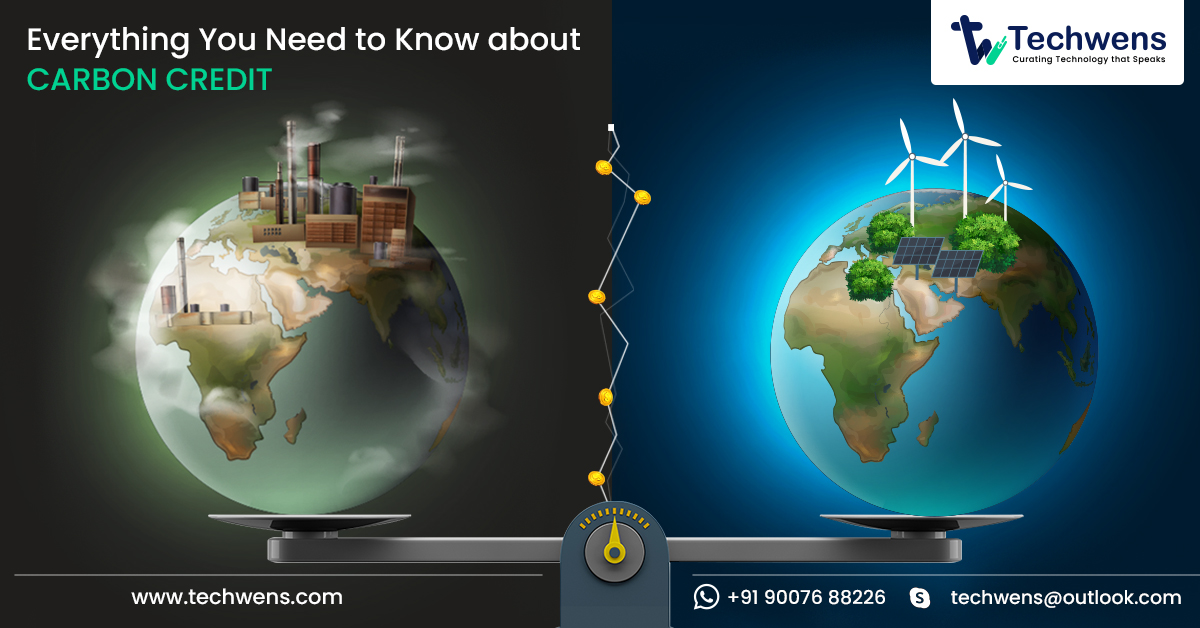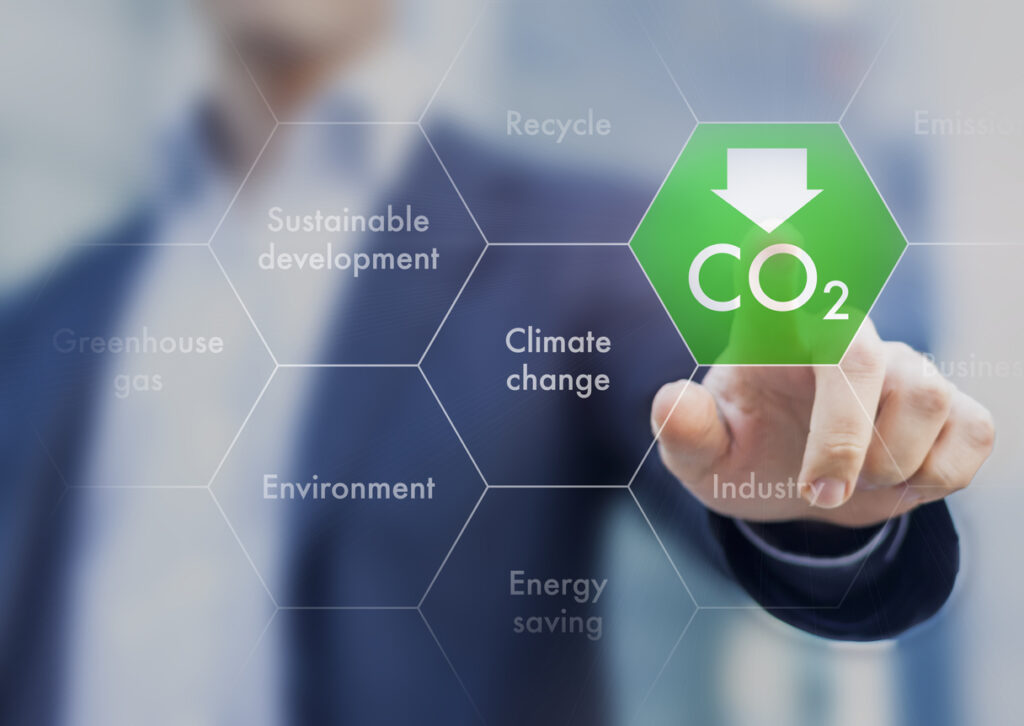Pricilla Gomes
December 16, 2022

As the world grapples with the imminent threat of climate change, finding innovative solutions to reduce greenhouse gas emissions has become a global priority. One such solution that has gained traction in recent years is carbon credits.
But what exactly are carbon credits, and how do they work? Let’s dive deeper into this fascinating concept and explore how it can be a game-changer in pursuing a sustainable future.
Table of Contents
What is Carbon Credit?
It represents reducing or removing one tonne of carbon dioxide equivalent (CO2e) from the atmosphere. It is a tradable permit that is issued to entities, such as companies or governments, as an incentive to reduce their greenhouse gas emissions.
The concept is based on the cap-and-trade principle, where a cap or limit is set on the total emissions allowed, and credits are used as a mechanism to achieve that cap.
How Do Carbon Credits Work?
Suppose a company successfully implements a project that reduces its emissions by 1000 tonnes of CO2e. It can then apply for and receive 1000 carbon credits, each representing one tonne of CO2e reduction.
These credits can be used in various ways, such as sold to other companies, retired to offset the company’s own emissions, or traded in international markets.
This creates a financial incentive for companies to invest in emission reduction projects and encourages them to adopt sustainable practices.
Significance of Carbon Credit in Addressing Climate Change
Check out the significance of these credits for climate change below:
- Such credits are a game-changer, offering a practical and innovative solution to address climate change head-on
- They incentivize businesses and industries to embrace renewable energy, reduce emissions, and adopt eco-friendly practices, driving a shift toward sustainability
- These credits serve as a moral compass, guiding organizations toward responsible environmental stewardship and fostering a culture of sustainability
- They promote global cooperation, transcending borders and cultures and providing a common language for nations to collaborate on a shared goal of mitigating climate change
- They empower local communities and indigenous peoples, recognizing the value of their traditional knowledge and sustainable practices and providing a means to earn income while protecting their land and resources
- They foster innovation by encouraging the development of cleaner technologies and pushing for more sustainable practices in production and consumption
Learn about the Different Types of Carbon Credits

Check out the dazzling array of such credits that are leading the charge in the battle against climate change:
Renewable Energy Credits (RECs)
Renewable energy projects like wind farms, solar power plants, and hydropower stations generate these green champions. They pack a punch by offsetting the carbon emissions from fossil fuel-based electricity generation, helping to reduce our reliance on dirty energy sources and promoting a cleaner, greener future.
Verified Emission Reductions (VERs)
These cool crusaders are generated by projects that reduce greenhouse gas emissions, like methane capture from landfills, reforestation efforts, and energy efficiency projects. They have the power to reduce carbon emissions directly and make a tangible impact on combating climate change.
Forest Carbon Offsets
These forest warriors are all about protecting and preserving our precious trees. They’re generated by projects that promote forest conservation, preventing deforestation and degradation, and promoting sustainable forest management. They are true defenders of our planet’s lungs, helping to absorb and store carbon from the atmosphere and safeguarding biodiversity.
Agriculture and Livestock Credits
These farm-to-table champions are generated by projects that promote sustainable agricultural practices and reduce emissions from livestock, such as methane capture from manure, soil carbon sequestration, and sustainable farming techniques. They are on the frontline of combating emissions from agriculture, which significantly contributes to global greenhouse gas emissions.
Blue Carbon Credits
These ocean protectors are generated by projects that restore and conserve coastal ecosystems like mangroves, salt marshes, and seagrasses. These superhero ecosystems are not only carbon sinks but also protect coastlines, support marine biodiversity, and provide livelihoods to local communities.
Social Carbon Credits
These community champions are generated by projects that promote social and environmental co-benefits, such as improving access to clean water, supporting education, and empowering local communities. These credits go beyond carbon reduction and foster sustainable development, equity, and social justice.
Why Partnering with Carbon Credit Development Services is Essential?

As businesses worldwide strive to reduce their environmental footprint and address the urgent challenge of climate change, these credits have emerged as a valuable tool for mitigating greenhouse gas emissions.
To effectively harness the potential of these credits for your business, partnering with a professional carbon credit developer can offer significant advantages.
High Expertise and Experience
Such type of development is a specialized field that requires in-depth knowledge of various emission reduction standards, methodologies, and verification processes.
A developer brings expertise and experience in navigating the complexities of such projects, from identifying and designing projects to obtaining certifications and managing verification processes.
By partnering with an expert developer, your business can leverage its knowledge and experience to ensure compliance with industry standards, maximize the credibility of your credits, and minimize the risks associated with this development.
Access to Established Networks and Markets
The developers often have established networks and partnerships with project developers, verification bodies, and carbon credit market participants.
This can give your business access to a wide range of emission reduction projects and markets, allowing you to select projects that align with your sustainability goals and business values.
Moreover, such developers can assist in navigating the complexities of carbon credit markets, including pricing, trading, and retirement options, in optimizing your carbon credit portfolio and achieving the best outcomes for your business.
Customized Solutions for Your Business
Every business has unique sustainability goals, emission profiles, and operational requirements. A developer can work closely with your business to understand your specific needs and develop customized carbon credit solutions that align with your sustainability strategy.
Whether you need to offset emissions from a particular source, achieve specific emission reduction targets, or enhance your corporate social responsibility (CSR) efforts, a carbon credit developer can tailor solutions to meet your business’s specific requirements.
This personalized approach can help you achieve your sustainability goals efficiently and effectively.
Enhanced Corporate Reputation
Corporate sustainability and social responsibility have become increasingly important for businesses, investors, customers, and other stakeholders. Partnering with a carbon credit developer and engaging in emission reduction projects can enhance your corporate reputation by demonstrating your commitment to addressing climate change and reducing your carbon footprint.
Carbon credits can provide tangible proof of your emission reduction efforts, which can be used in sustainability reporting, marketing campaigns, and stakeholder communications to showcase your company’s sustainability leadership and differentiate your brand in the competitive market landscape.
Potential Cost Savings and Revenue Generation
Carbon credits can offer potential cost savings and revenue generation opportunities for your business. By investing in emission reduction projects and generating carbon credits, you can offset your own emissions, reducing the need to purchase costly emission allowances or pay carbon taxes.
Moreover, carbon credits can be sold or traded in carbon credit markets, providing a potential source of revenue for your business.
A carbon credit developer can assist in identifying and developing cost-effective emission reduction projects that generate high-quality carbon credits, helping your business unlock potential cost savings and revenue streams.
Conclusion
Last but not least, this is the complete guide about carbon credits. Feel free to contact Techwens for any type of carbon credit development services. For more information, kindly check our service page, and don’t forget to let us know how this blog has helped you out.